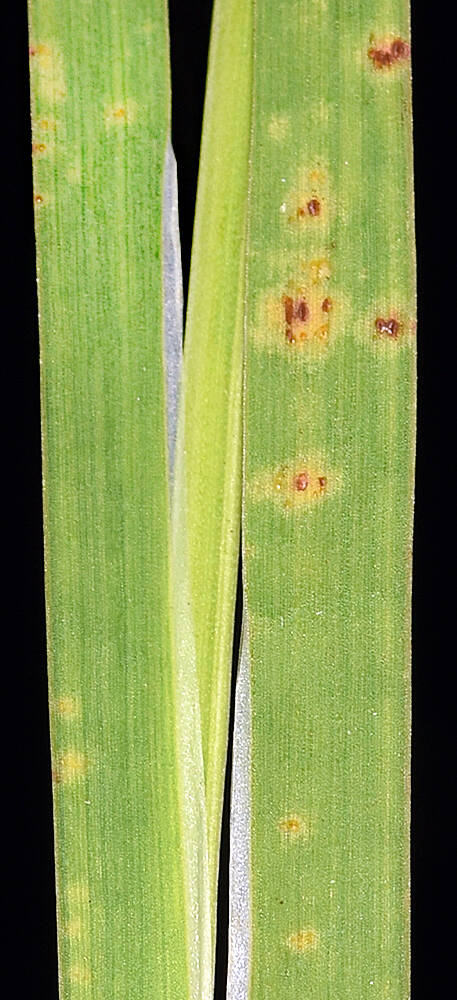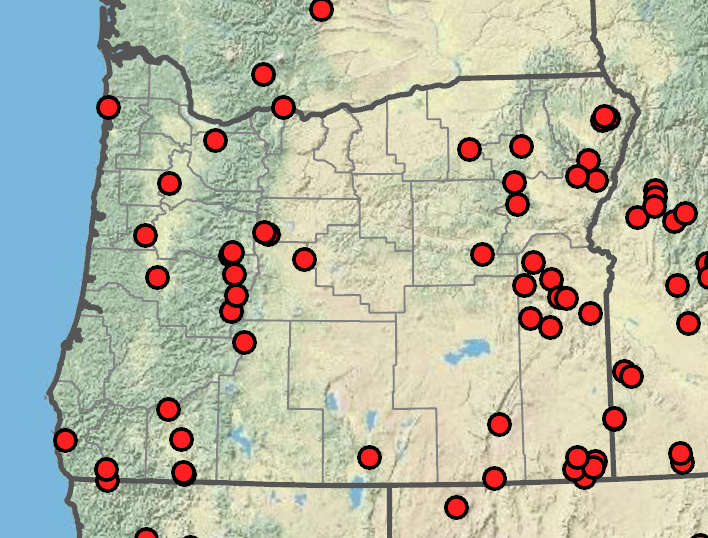Juncus tenuis
Juncus saximontanus
path rush, poverty rush, slender rush
Rocky Mountain rush
thin and wiry;
blade flat and slightly inrolled, usually 1–8 mm on early season shoots; dirty white or translucent, scarious; acute or acuminate;
auricles soft and thin.
flat; iris-like, blue-green, partially septate;
auricles 0–1.2 mm.
cymes, usually small, 1–6 cm; individual flowers often longer than internodes;
bractlets subtending flowers usually acute (blunt).
(2)10–20 clusters; clusters 4–25-flowered.
tepals 6, 3–4.1 mm, green to reddish;
tips acuminate;
stamens 6;
filaments 0.6–1.2 mm;
anthers usually 0.4–0.6(0.8)mm;
styles 0.1–0.3(0.5)mm.
tepals 6, often green (red) to medium brown (dark brown);
stamens usually 6;
filaments 0.6–1.1 mm;
anthers 0.4–0.9 mm;
style 0.4–0.9 mm.
usually 2.5–3 mm; more than 75% the length of; and shorter than the tepals, pale brown;
apex usually blunt (acute), not crested, 1-chambered.
shorter than to longer than the tepals, brown to dark brown or blackish, obtuse or acute, 1-chambered.
0.4–0.5 × 0.2–0.25 mm, apiculate.
0.4–0.5 × 0.25–0.3 mm, apiculate, reticulate.
=40, 80.
Juncus tenuis
Juncus saximontanus
Shores, swales, springs, dune hollows, wet woods, marshes, damp paths, ditches, cranberry farms, moist disturbed sites. 0–1800m. BW, Casc, CR, Est, Lava, Sisk, WV. CA, NV, ID, WA; throughout most of North America. Native.
Juncus tenuis is usually much smaller than Juncus anthelatus. The blunt unridged capsules separate J. tenuis from J. confusus, J. occidentalis, and J. trilocularis.
Shores, creek banks, springs, swales, peatlands, ditches. 100– 2500m. BW, Casc, ECas, Lava, Sisk, WV. CA, ID, NV, WA; north to AK, northeast to Manitoba, southeast to TX, south to Mexico. Native.
Juncus saximontanus has six stamens per flower and is usually found east of the Cascade Range. It is weakly separated from J. ensifolius, which has three stamens per flower. Tepal color, inflorescence shape, and style length are unreliable means to separate them. A few plants have three to six stamens and are of uncertain status, perhaps representing hybrids.
Peter Zika
Peter Zika
- Local floras:
BC,
CA,
OR,
WA
- Local Web sites:
CalFlora,
CalPhotos,
Flora NW,
PNW Herbaria
WildflowerSearch
iNaturalist (observations)
USDA Plants Database
- LBJ Wildflower Center
- SEINet
- Plants of the World Online
- Encyclopedia of Life
- Wikipedia
- Google Image Search
- Local floras:
BC,
CA,
OR,
WA
- Local Web sites:
CalFlora,
CalPhotos,
Flora NW,
PNW Herbaria
WildflowerSearch
iNaturalist (observations)
USDA Plants Database
- LBJ Wildflower Center
- SEINet
- Plants of the World Online
- Encyclopedia of Life
- Wikipedia
- Google Image Search



